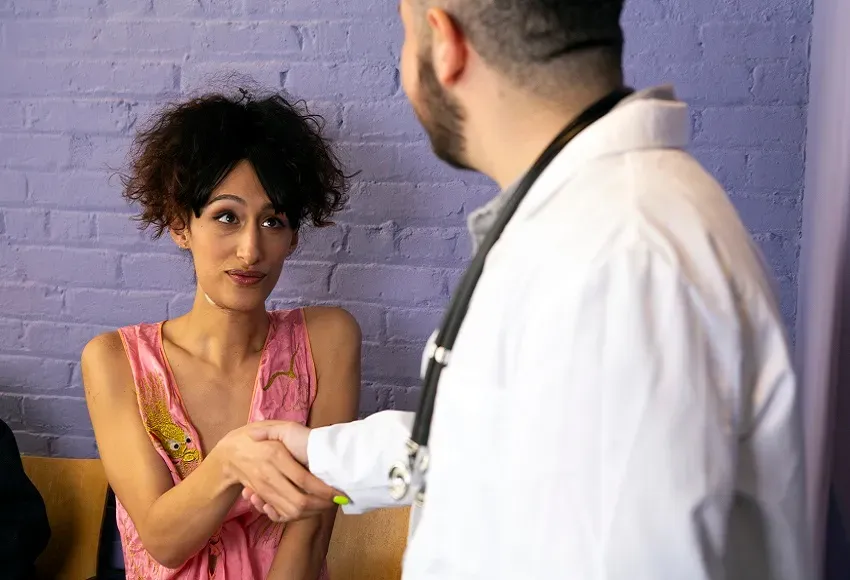On the afternoon of May 10, the U.S. Food and Drug Administration (FDA)expanded the use of the Pfizer-BioNTech coronavirus vaccine to include 12- to 15-year-olds under an emergency use authorization (EUA).
An EUA for the Pfizer vaccine was originally issued on December 11, 2020. It was intended to protect individuals ages 16 and above against becoming seriously ill from the virus. Since the start of the pandemic, about 1.5 million COVID-19 cases in youths aged 11 to 17 have been reported to the Centers for Disease Control and Prevention (CDC), which has shifted its focus towards getting younger populations vaccinated – and fast.
"Today's actions allow for a younger population to be protected from COVID-19, bringing us closer to returning to a sense of normalcy and to ending the pandemic," stated Dr. Janet Woodcock, acting FDA commissioner, in an agency press release. "Parents and guardians can rest assured that the agency undertook a rigorous and thorough review of all available data, as we have with all of our COVID-19 vaccine emergency use authorizations," she added.
Essential for school reopening
Overall, COVID-19 cases among adolescents are milder compared to the adult population, but with in-person learning resuming nationwide, coronavirus cases have become more prominent in young folks than what they once were. The FDA's justification for expanding the vaccine to youth stems from scientific evidence proving that it has more known benefits than risks. Such benefits include a decreased risk of hospitalization, death, and long- and short-term symptoms, in addition to making it more difficult to contract the virus in the first place. (The duration of protection that the vaccine provides is still unknown, however.)
"Having a vaccine authorized for a younger population is a critical step in continuing to lessen the immense public health burden caused by the COVID-19 pandemic," said Dr. Peter Marks, director of the FDA's Center for Biologics Evaluation and Research.
The Pfizer vaccinations for children will be performed in the same matter as they are for adults: two injected doses, three weeks apart. Common side effects of the Pfizer vaccine include fatigue, injection site pain, headache, muscle pain, fever, and chills. Those who receive a first vaccine will receive a card to bring to their second appointment, and are advised to take a picture of it on their phone in case it gets lost. Scientists are still uncertain as to whether a booster shot will be needed down the line, so it's best to keep the card in a safe place even after the second shot.
The FDA has also updated its online fact sheets for health care providers, vaccine recipients, and caregivers. An update on the EUA plan for the 12-to-17 age group is expected at a virtual agency meeting June 10, which will be livestreamed on the FDA's website as well as its YouTube, Facebook and Twitter pages.
Other vaccines coming soon
For months, Moderna has been working on vaccination trials in children, and on May 6, the biotechnology company provided updates on its Phase 2/3 TeenCOVE study, which stated that the Moderna vaccine "showed vaccine efficacy against COVID-19 of 96 percent" in the 12-to-17 group. The company relayed that the participants had no serious side effects and "well tolerated" the vaccine. The TeenCOVE study is ongoing and includes participants across the United States. Johnson & Johnson has also been conducting vaccine trials in children and teens. More information on these trials is expected to be released in the coming weeks.
What about LGBTQ+ youth?
Among the young people hardest hit by the coronavirus pandemic are LGBTQ+ youth. While anxiety and depression levels due to the pandemic have remained fairly high for everyone, LGBTQ+ youth are reporting increased difficulties of isolation and loneliness in particular, according to the Trevor Project. The dramatic loss of in-person learning and attempting to adapt to virtual learning have resulted in the loss of support networks and safe spaces for American youth. The organization's 2020 National Survey on LGBTQ Youth Mental Health relayed that less than 50 percent of LGBTQ+ youth ages 12 to 24 live in LGBTQ+ affirming households, and 16 percent reported feeling unsafe in their homes since the start of the pandemic.
Furthermore, LGBTQ+ youth have long had higher rates of homelessness, due to teens being kicked out and rejected for their sexual preferences and gender identities, as well as instances of physical, sexual, and emotional abuse. Youth.gov estimates that 20 to 40 percent of runaway and homeless youth identify as part of the LGBTQ+ community. What is more worrisome?
Homelessness increases one's risk of contracting the virus, due to less accessibility to hygiene facilities, less financial ability to afford face masks (and basic life necessities), and less ability to socially distance, particularly while staying at a shelter.
Getting adolescents vaccinated will not only be a turning point in coronavirus cases that continue to sweep the country, but it will also improve the quality of so many young LGBTQ+ lives. Once fully vaccinated, LGBTQ+ youth will have more opportunities to return to their beloved safe spaces they have so dearly missed. They will have more opportunities to engage (in person!) with their friends and support networks that they have gone so long without seeing. They will have more opportunities to get out of unaccepting households, to go out and appreciate the beauty of the world, even if only for a few hours at a time. If living in a shelter, LGBTQ+ youth may become less fearful of contracting coronavirus if they become vaccinated. Once vaccinated, LGBTQ+ youth will be able to regain a sense of confidence and freedom that has been long lost.


